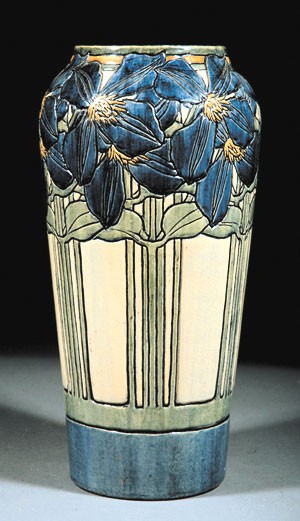Education for the women of the Victorian era was intended solely for the purpose of reinforcing their role as a wife and mother. While the Education Act of 1870 made elementary education for both sexes compulsory, it did little to help women develop intellectually. They were taught the basics or arithmetic, reading and writing, but the main emphasis of their education was placed on the “wifely” responsibilities of cooking, sewing and knitting. The idea that a woman should be able to support herself was never a consideration. A woman was to marry and dedicate herself to caring for her home and husband. If higher education was available it was in the arts and foreign language, subjects which were felt could help her to represent herself well in social situations evolving around her husband’s career. But, all of that was about to change.
At the end of the 19th century women took on an air of entitlement, as they stepped up to take their place in the workforce. In fact, between 1880 and 1910 the number of women employed outside the home in the U.S. rose from 2.6 million to 7.8 million. As those who had been stay at home wives took on their new role as employees the need for higher education of women became apparent. Colleges began to spring up across America that would provide the skills needed to earn money in a dignified manner that they had not previously experienced. One of the first colleges to step up to fill this need was Newcomb College.
Newcomb College, also known as H. Sophie Newcomb Memorial College, was founded in New Orleans in 1886 as the coordinate women’s college of Tulane University for the sole purpose of instructing young Southern women in the liberal arts. Their art department, headed by Ellsworth Woodward and his assistant Mary given Sheerer, formerly of Rookwood Pottery, afforded its students a full four year course of instruction and the opportunity to stay on after graduation to design and sell their wares.
Taking their inspiration from the beauty of the deep south the students of Newcomb used the rich clay of Louisiana to form some of the most highly sought pottery of the American Arts & Crafts period (1895-1920). These pieces will be decorated with night-blooming cereus, flowering cactus, magnolia blossoms, Louisiana iris and cypress trees in shades of yellows, blues and greens. Wildlife also appears on many of the early Newcomb pieces where you will find the likeness of fish and marsh birds incorporated into the hand-painted designs.
As the 1920s approached, the work coming out of Newcomb took on an Art Deco appearance. While maintaining its signature floral and moss-draped tree designs, they added geometric patterns. Two of Newcomb’s most popular designs came from this period, “Espanol” and “Moon and Moss.” The pottery from this era will feature high relief carved pieces in matte finishes and shades of blue, green and pink. In the 1930s Newcomb adapted to the minimalism of the “Machine Age” with simpler designs and rich deep colors. Even though their competitors were turning to machine-made pottery, they remained true to their roots, producing every piece by hand.
As the end of the 1930s approached sales dropped drastically and production stopped in 1940. In all, the students of Newcomb had produced over 70,000 hand thrown/hand painted designs, all of which are highly sought by top end collectors.
COLLECTORS NOTE: While we are limited in our travel from home you can find a wonderful offering of Newcomb Pottery currently for sale on eBay. Until next time . . . Linda
Linda Kennett is a professional liquidation consultant specializing in down-sizing for seniors and the liquidation of estates. Linda is not taking clients at this time.



